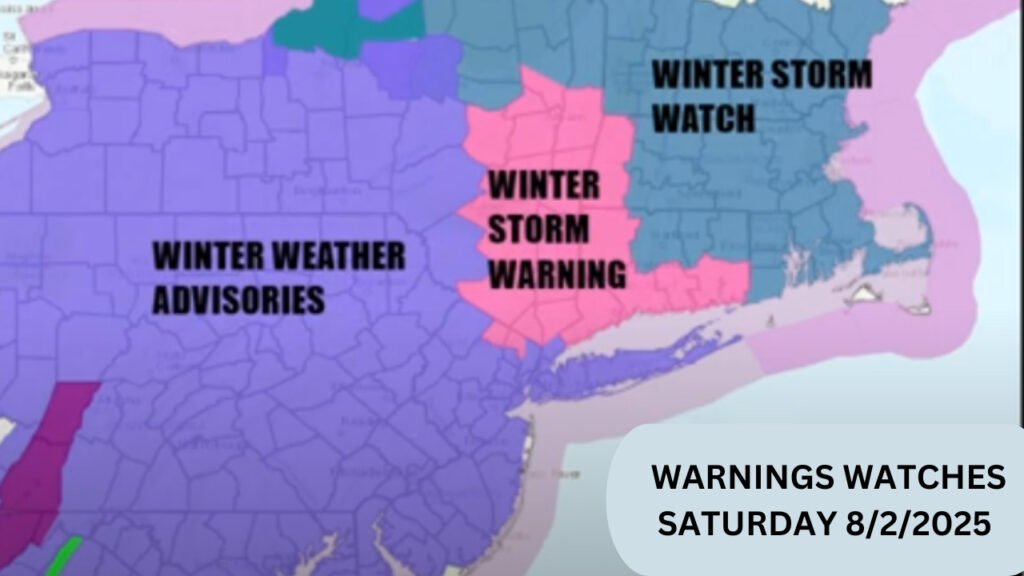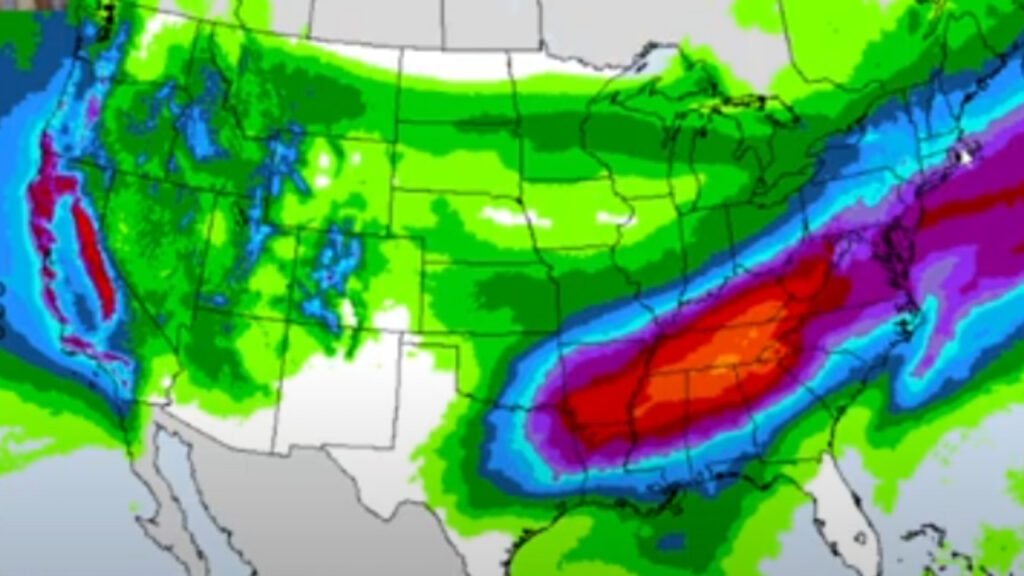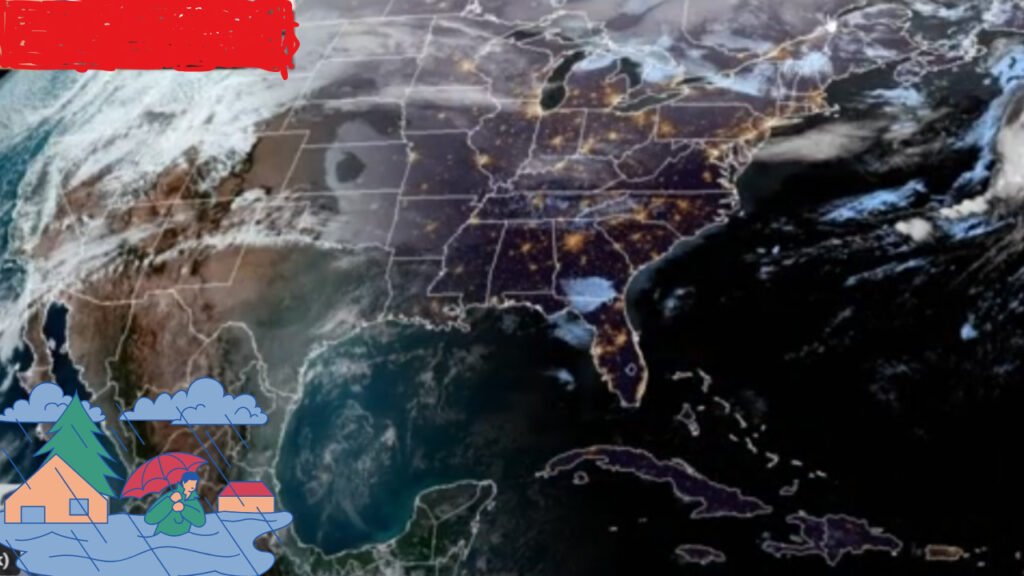Winter storms are a natural occurrence, but when a winter storm warning is issued, it signals a serious weather event that demands immediate attention. As climate patterns continue to shift, extreme winter weather has become more frequent and intense, making it crucial to stay informed and prepared. In this guide, we will cover what a winter storm warning means, how to prepare for it, and how to stay safe during extreme winter conditions in 2025.
Table of Contents
What is a Winter Storm Warning?
A winter storm warning is an alert issued by meteorological authorities when hazardous winter weather conditions, such as heavy snowfall, freezing rain, or blizzards, are expected within a specific timeframe. Unlike winter storm watches, which indicate the potential for severe weather, a winter storm warning means that dangerous conditions are imminent or already occurring. These warnings are essential in helping communities brace for extreme weather and minimise disruptions.
Causes of Severe Winter Storms in 2025
Several factors contribute to the formation of severe winter storms. In 2025, meteorologists have observed significant climate shifts that have intensified winter weather patterns. These include:
- Arctic Air Masses – Cold air from the Arctic interacts with moist air masses, leading to heavy snowfall.
- Jet Stream Shifts – Changes in the jet stream can cause prolonged winter storms in certain regions.
- El Niño and La Niña Effects – These climatic phenomena impact global weather, influencing the severity of winter storms.
- Climate Change – Rising global temperatures lead to increased moisture in the atmosphere, intensifying snowfall and ice storms.
Understanding these causes helps experts predict when and where a winter storm warning should be issued, allowing communities to take necessary precautions.
How to Prepare for a Winter Storm Warning
Preparation is key when dealing with a winter storm warning. Here are some essential steps to take before the storm arrives:

1. Stock Up on Essentials
Ensure you have enough food, water, and medical supplies to last for at least three days. Non-perishable food items, bottled water, and prescription medications should be included in your emergency kit.
2. Insulate Your Home
Keep your home warm by sealing gaps, insulating pipes, and having a backup heat source such as a generator or fireplace. A winter storm warning often brings power outages, so having alternative heating options is crucial.
3. Prepare Your Vehicle
If you must travel, equip your car with winter tyres, an emergency kit, blankets, and extra fuel. A winter storm warning means road conditions will likely be treacherous, increasing the risk of accidents.
4. Stay Informed
Monitor weather forecasts through reliable sources, such as the Met Office, and sign up for emergency alerts. A winter storm warning can escalate quickly, so staying updated ensures timely action.
Staying Safe During a Winter Storm Warning
Once a winter storm warning is in effect, follow these safety measures to protect yourself and your loved ones:

1. Stay Indoors
Avoid unnecessary travel and remain inside your home. If you must go out, dress in layers, cover exposed skin, and limit your time in the cold.
2. Prevent Hypothermia and Frostbite
Extreme cold temperatures can lead to frostbite and hypothermia. Wear insulated clothing, keep dry, and avoid prolonged exposure to freezing temperatures.
3. Avoid Carbon Monoxide Poisoning
During power outages, people often use alternative heating sources such as generators or gas heaters. Always ensure proper ventilation to prevent carbon monoxide poisoning, which can be deadly.
4. Protect Your Pets
Pets are vulnerable to cold weather, so keep them indoors or provide adequate shelter if they must stay outside.
The Impact of Winter Storm Warnings on Daily Life
A winter storm warning significantly affects daily life, causing disruptions in transportation, power supply, and public services. Schools and businesses may close, flights get cancelled, and emergency services become overwhelmed with calls. In 2025, advances in weather forecasting and infrastructure resilience have improved response efforts, but the challenges of extreme winter storms remain substantial.
Recovery and Aftermath of a Winter Storm
Once the winter storm warning is lifted, recovery efforts begin. Here’s what to do post-storm:
1. Clear Snow Safely
Shovel snow carefully to avoid strain or injury. Take breaks and stay hydrated while clearing driveways and pathways.
2. Check for Property Damage
Inspect your home for any damage caused by ice accumulation, heavy snow, or fallen trees. Report significant damage to insurance providers promptly.
3. Assist Vulnerable Neighbours
Elderly individuals and those with disabilities may need extra assistance. Check on neighbours and offer help where needed.
4. Restock Emergency Supplies
After experiencing a winter storm warning, evaluate your preparedness and restock any used supplies to be ready for future storms.

Conclusion
A winter storm warning is a critical alert that should never be ignored. In 2025, with climate change influencing weather patterns, severe winter storms are becoming more intense and unpredictable. By staying informed, preparing adequately, and following safety guidelines, you can protect yourself, your loved ones, and your property. Always heed official warnings and take necessary precautions to navigate the challenges of extreme winter weather effectively.
